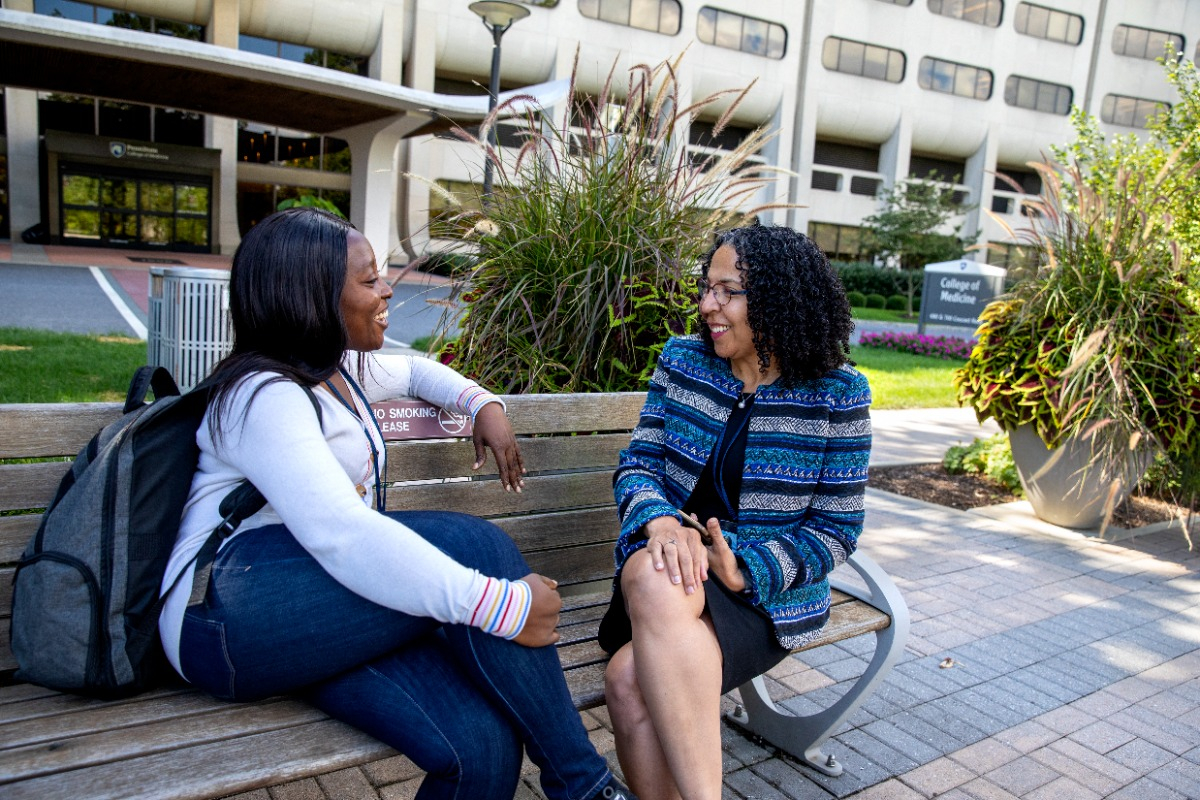Catching up with Dr. Inginia Genao

Dr. Inginia Genao began her appointment as Penn State College of Medicine’s first vice dean of diversity, equity and belonging on April 1. We caught up with her in October to get some insights into the rebuilding process she has been leading in the Diversity, Equity and Belonging space.
You began this role at the College in April. Can you tell us a little bit about what your journey has been like since then, as you’ve listened to the needs of the College?
The journey has been fun, exciting, challenging and most of all full of optimism. It has been an amazing experience to become acquainted with the cultures of the College and of central Pennsylvania even as I’ve been meeting new people and navigating new physical spaces. I’ve emphasized the building of relationships with the many faculty, students and staff who are so committed to this work – one of the reasons why I decided to join Penn State. I have been welcomed with open arms – so many offered to help me and my family with the transition, including invitations to their homes.
Can you tell us a little bit about the listening tours you’ve embarked on since your time here, and why you decided to incorporate these tools into your discovery process?
Listening is a skill and an art. I needed to hear directly from as many people as possible. I wanted staff, trainees and faculty to know that I am HERE to listen and to take their concerns seriously – i.e. incorporate what I hear (both positive and constructive comments) into the College’s strategic plan, which encompasses all of Diversity, Equity and Belonging (DEB). The listening tour was a wonderful way of connecting the welcoming messages with the faces (largely via Zoom).
What did those listening tours teach you about the College? What needs were illuminated and what triumphs were underscored? Similarly, were you surprised by anything you learned during the tours?
The listening tours taught me a lot about the College and reaffirmed that I made the right decision in coming here. People shared many opportunities for improvement, such as the need to address the lack of diversity in their own groups, what diversity means to them, and how we can best measure it beyond race and gender. It was very informative to understand that the College triangulates with Penn State University and Penn State Health, and at times is being pushed or pulled in different directions. There is an urgent need for a safe space where people can be themselves, express vulnerability and can agree to disagree. It was also evident that many people both wanted and were ready for change. Some important DEB work had already been happening as evidenced by the Association of American Medical Colleges Diversity, Inclusion, Culture and Equity inventory initiated before my arrival. I was not surprised but I would have liked to have had more students join me for the listening tours. Since then I have been connecting with the students in other settings.
What’s next for you as you continue to rebuild within this space at the College?
Currently I am building my team. I have been called a “builder” before because the building and strengthening of infrastructure is what I have done throughout my career. So, I am building my office team but also strengthening the infrastructure with a DEB steering committee composed of students, staff, faculty and community leaders; soliciting a DEB Champion from each department and business unit; and by establishing relationships with student groups and community leaders.
What initially drew you to this field of work, in the Diversity, Equity and Inclusion space? Why is this an area that you choose to build your career on?
I initially thought that I was going to be a private practice physician in a fully staffed office. Then through the American Medical Student Association, I obtained a summer job at the Jordan Community Health Center in Rochester, New York. That experience opened my eyes to the complex dynamics involved in the provision of medical care to the underserved and the satisfaction of this work. The dedication of the people working there was contagious. I finished residency with the goal of practicing in an underserved area and joined the faculty of Emory University to work at Grady Memorial Hospital. This is where I combined my role of being a physician with being a leader. It was impossible to not act – too many barriers to health care faced by too many people. Many of the people brought me back to my own personal experiences with poverty and the health care system.
Please include any other comments or information that you’d like to share with the College community.
I want to express my immense gratitude to the so many people who helped to engineer my landing at Penn State – I am not going to mention them by name or office groups but they certainly know who they are. I absolutely love what I do.
If you're having trouble accessing this content, or would like it in another format, please email the Penn State College of Medicine web department.
